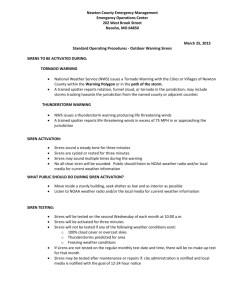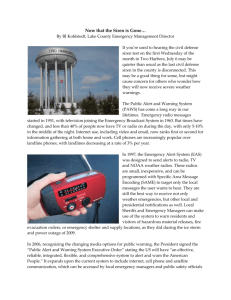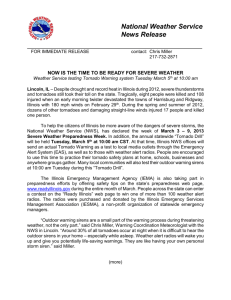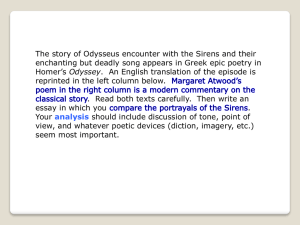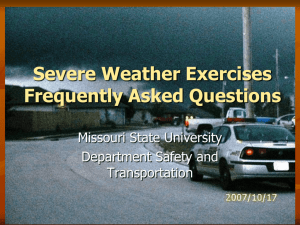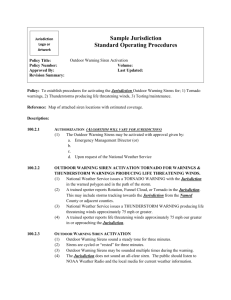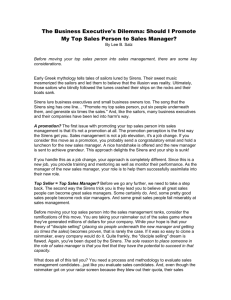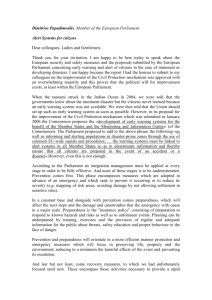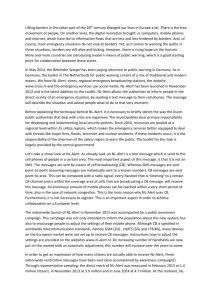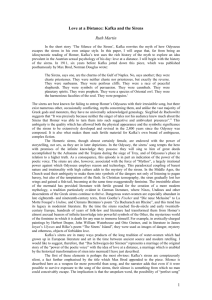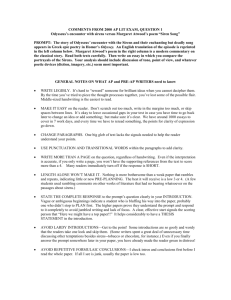September
advertisement
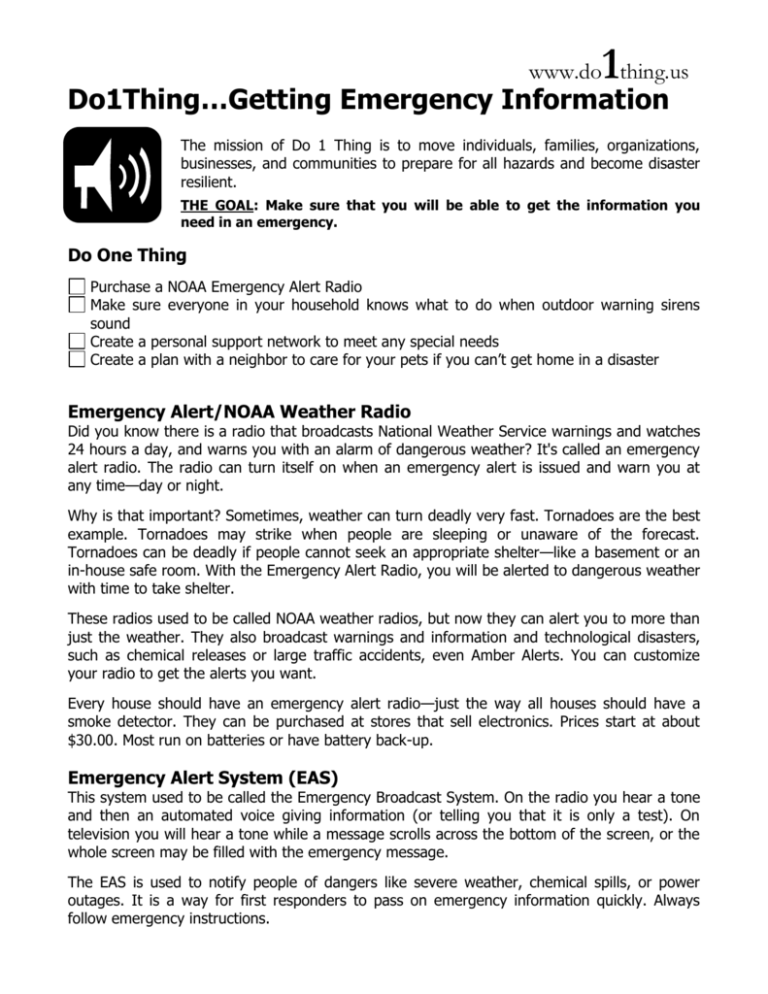
1 www.do thing.us Do1Thing…Getting Emergency Information The mission of Do 1 Thing is to move individuals, families, organizations, businesses, and communities to prepare for all hazards and become disaster resilient. THE GOAL: Make sure that you will be able to get the information you need in an emergency. Do One Thing Purchase a NOAA Emergency Alert Radio Make sure everyone in your household knows what to do when outdoor warning sirens sound Create a personal support network to meet any special needs Create a plan with a neighbor to care for your pets if you can’t get home in a disaster Emergency Alert/NOAA Weather Radio Did you know there is a radio that broadcasts National Weather Service warnings and watches 24 hours a day, and warns you with an alarm of dangerous weather? It's called an emergency alert radio. The radio can turn itself on when an emergency alert is issued and warn you at any time—day or night. Why is that important? Sometimes, weather can turn deadly very fast. Tornadoes are the best example. Tornadoes may strike when people are sleeping or unaware of the forecast. Tornadoes can be deadly if people cannot seek an appropriate shelter—like a basement or an in-house safe room. With the Emergency Alert Radio, you will be alerted to dangerous weather with time to take shelter. These radios used to be called NOAA weather radios, but now they can alert you to more than just the weather. They also broadcast warnings and information and technological disasters, such as chemical releases or large traffic accidents, even Amber Alerts. You can customize your radio to get the alerts you want. Every house should have an emergency alert radio—just the way all houses should have a smoke detector. They can be purchased at stores that sell electronics. Prices start at about $30.00. Most run on batteries or have battery back-up. Emergency Alert System (EAS) This system used to be called the Emergency Broadcast System. On the radio you hear a tone and then an automated voice giving information (or telling you that it is only a test). On television you will hear a tone while a message scrolls across the bottom of the screen, or the whole screen may be filled with the emergency message. The EAS is used to notify people of dangers like severe weather, chemical spills, or power outages. It is a way for first responders to pass on emergency information quickly. Always follow emergency instructions. Outdoor Warning Sirens—Take Cover and Tune In Your community may have outdoor warning sirens (sometimes called tornado sirens) to alert you in an emergency. These sirens are intended to let people who are outside know that they should go indoors and get more information. Different communities may use different siren tones for each emergency. They may sound the sirens for the whole time that danger is present (like a tornado warning) or they may sound sirens at the beginning and the end of the event. One thing is always the same: when you hear the outdoor warning sirens sound in your community it is not safe for you to be outdoors. You should take cover inside a sturdy structure and get more information from television, radio, internet, or by contacting a friend or family member. (Remember, never call 911 to get information about what is going on in an emergency. Only call 911 if you need emergency assistance.) Contact your local fire department or your emergency management office to find out if your neighborhood is covered by warning sirens, when they are tested, and when they would be activated. Make sure other members of your household know what to do when outdoor warning sirens sound. Create a personal support network The way that emergency information is sent out may not work for everyone. If you or someone that you know may have difficulty receiving, understanding, or acting on emergency information, make a plan now. Organize a personal support network with your family, friends, or neighbors. A personal support network is made up of individuals who will communicate to you personally to make sure you are aware of an emergency. Things to consider… Understand your limits and the limits of the system. You are the only one who can ensure that you will be safe during an emergency. Pets If you are told to evacuate during an emergency, take your pets with you if you can—even if it looks like you will only be gone for a short time. If an evacuation warning comes while you are away from home, have a plan in place with a neighbor to get your pets out. Emergency evacuations can happen anywhere, but if you live in a hazard area, like a floodplain, it is especially important to have a plan. For more information http://www.ready.gov http://www.disabilityinfo.gov http://www.prepare.org http://www.do1thing.us Emergency news or weather broadcasts may not be close captioned. Information that is shown on screen may not be summarized verbally. Automated voices and voices over loud speakers may be difficult to understand. Information comes quickly and the stress of a disaster may make it difficult to understand or remember instructions. Words moving across the bottom of a television screen may move very quickly. The screen color or color of the text may make some information on television hard to read.
